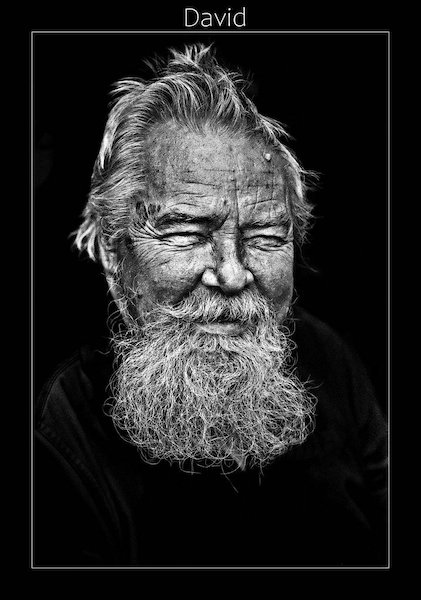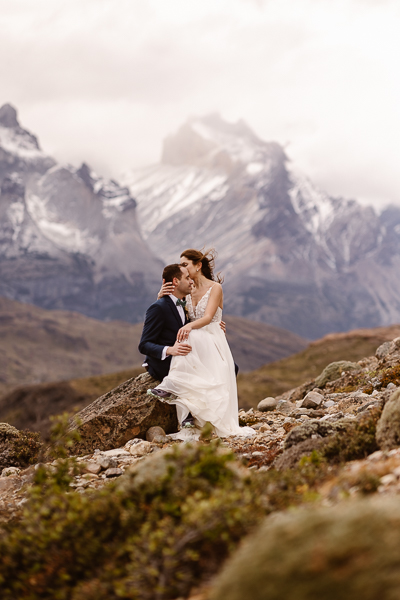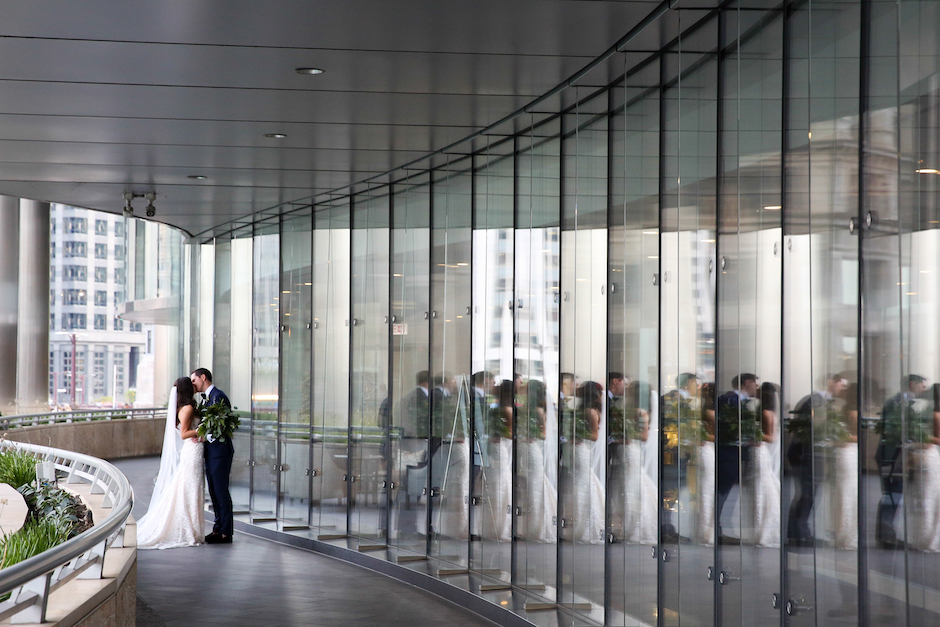Vowing to Be Different
September 6, 2012
Photojournalist Edward Keating has always been something of a renegade. To hear him talk about his life is akin to an old soldier telling war stories. Within a few minutes of meeting him, he pulls out a harmonica, hums a quick tune, and recalls the time he talked his way out of Serbian detainment during the Kosovo War by playing Bob Dylan’s “Mr. Tambourine Man” for the soldiers (this after hours of physical and mental flagellation). “It turned into a party…the officer just shrugged. What was he going to do?” Keating explains sheepishly.
In his Upper West Side apartment-cum-office, the interior is crammed with prints from other photographers, milling interns and enough books to open a library. His gear is arranged haphazardly in a paint-chipped cabinet: a Canon 5D he uses only occasionally (“When I need a long lens”), and his go-to camera, a Leica MP. It’s not that Keating hates digital—he knows as well as anyone that it’s a necessary part of being a photographer today. It’s just that he is, like the old saying goes, an analog man in a digital world.
He speaks with a manic lilt, bearing a hint of the weariness that must come from the sheer amount of living he’s experienced. A Village Voice profile from 2002 characterized him as an “outlaw” on the staff of The New York Times, “a scruffy disorganized…arrogant son of a bitch.” In that same profile, Times reporter Charlie LeDuff notes, “he’s a brilliant photographer” who comes back with “the goods.” In truth, Keating is a man of another era, his unkempt gray hair and sharp angular features suggest a sort of hard-working frantic genius. “I’m a street guy,” he says. “That’s home.”
So, how did this self-proclaimed “street guy”—a man who has spent his life courting the randomness and spontaneity that characterizes great street photographers—begin wedding photography? It’s a long story.
Keating spent his early career working his way up the photojournalistic ranks, from freelancer to New York Times staffer. “When I started taking pictures, I said it’s going to take me ten years to master this…to where I’m going to be able to do some real work,” Keating says. “Ten years, four months later, I got hired by the Times.” When asked how he did it, he answers simply and seriously: “I photographed and processed and printed morning, noon and night for ten years.”
Keating shot for a hundred publications before he reached the Times and although he can’t remember his first published assignment, he does recall the first time the paper called him in to investigate a gas leak (turning out to be a false alarm) in the West Village. No photos were published, but suddenly he was on the calling sheet. Three years later, in October 1991, he made it onto the staff. It wasn’t long before an editor pitched him an idea that has become part of his legacy at the Times.
The idea was for a weekly weddings column, called “Vows,” that would combine the personal narratives of newly-married couples with photography of their weddings shot by the Times. “I was very reluctant [to do the column],” admits Keating. “I had been working all these years to get to the New York Times and to become a journalist…[I didn’t want] to get branded as a society photographer.”
What changed his mind were assurances by his editors that he could approach the weddings as he saw fit, photographing the events anyway he liked; they promised no rules.
Keating was eager to work his way on to the paper but wasn’t convinced the “Vows” column was the guaranteed way to do it. “I started [the column] with as much intention of being sacked from it as I was hoping to convert it into something [long term],” Keating says. “I didn’t know how successful I’d be able to be at that.”
When Keating shot his first wedding for the column, he resolved to use a street photography aesthetic—with nods to Robert Frank, Walker Evans and Henri Cartier Bresson. “[My wedding photography] is bringing the street work indoors, trying to capture the same kind of reality and spontaneity that I see with more random people on the street,” he says. The approach produced a style of wedding photography that was unconventional, certainly not for every client, but well-suited to the couples that ended up in the column or were looking for something other than the typical group shots.
The column soon became a staple of the Times’ Society pages (which celebrated its 20th anniversary this past May). It was so popular that five years after it was first published, the Times began running it on the national pages, cementing its status as a cultural touchstone. One of the unintended results of the column was the effect that it had on the wedding photography business. “[It] had a pretty dramatic impact,” Keating says. “I’d have photographers come up to me at weddings—the hired guns—and tell me how much their business had skyrocketed because I had opened the door to this new kind of picture that was more real life…”
The idea behind the tone of the “Vows” column, aside from the street photography aesthetic, was that weddings were emotionally complex events and the photography should reflect that. “Sometimes the pictures weren’t always really happy. Sometimes they were ambiguous,” explains Keating. “It’s a passage; you gain one thing, you lose something else. They’re bittersweet moments.” Portraying that duality was at the forefront of Keating’s approach, then and now.
Although Keating moved on from “Vows” 12 years ago to focus on the other opportunities, he didn’t stop shooting weddings; they have remained an invaluable part of his business and have taken him from the Hamptons to Italy to the Adirondacks. Although he’s honed his approach, Keating maintains that he tries to enter every wedding with “a blank slate,” anticipating only eight or ten critical moments that he knows he wants to shoot. Aside from that, he shoots on the fly and, while he’s now hired directly by clients rather than being insulated by the Times, he still takes a no-holds-barred approach.
“You can’t be shooting reluctantly,” he explains. “If the father drops dead at the altar, I’m going to photograph it. That’s what happened. Some people might be appalled but that’s what I’m here for.”
Alon Agai, Keating’s sales representative, clarifies that Keating’s photography “is more like a journal of the event,” than a set of perfect photographs. However, one shouldn’t take “journal” to mean cheap or poorly-done—a wedding album by Keating can easily fetch $10,000. He shoots almost exclusively black-and-white film on his Leica. He then scans the negatives from a high-resolution negative scanner and works with each image individually, doing hours of post to draw out the strong contrasts that mark his work. Albums are printed on his Epson Stylus Pro 4900, which he maintains is “as high-tech as any professional printer.” Prints are made using archival inks and papers, then bound together. Keating likens his albums to “museum pieces” that are “highly curated.”
Keating’s wife, Carrie Boretz, a photojournalist who shoots alongside Keating at weddings, elucidates one of his most important talents. “One of the hardest things to do is to shoot four people with drinks in their hands…in an interesting way,” Boretz says. “I still find it challenging, but he moves right in and gets these beautiful expressions.”
Although Keating concedes that he loves shooting weddings, it’s the “wedding photography business” that he doesn’t like—a sentiment that many a wedding photographer might echo. It’s probably for that reason that Keating has asserted his posture as a street photographer and journalist first, wedding photographer second. His current schedule includes juggling dozens of unrelated projects: portraits of George Soros on Monday, hanging an exhibition on Wednesday, shooting a story for Time magazine on Thursday, a wedding in the Adirondacks on Saturday, a film premiere on Sunday. Keating was the Times official September 11th photographer—an honor that netted him a Pulitzer Prize in 2002. Since, he has worked for Time, Rolling Stone and New York magazine, shooting portraits of notables that include Norman Mailer, Bono and more recently, Nicki Minaj and Bruno Mars.
Currently, he’s wrapping up a ten-year project that he speaks about in hushed tones and a barely-concealed excitement. “Route 66” is an unflinching statement on American progress and decay as told through the formerly prosperous Route 66. Currently on exhibition at the Istanbul Photography Museum, Keating is also working on getting the project published. “Most of it is gone,” Keating says bluntly of the famous route. “It’s not even decayed. It’s been paved over. It’s been built over.”
That he brings his uncompromising vision and candor to all of his projects is unsurprising. The same vision reflects in the Keatings’ wedding albums, which show a tender and intimate photographic eye, intent on capturing a wedding for exactly what it is.
Harrison Jacobs, a recent graduate of Tufts University, is a new Rangefinder contributor. Reach him on Twitter @beatniktrekker or learn more at about.me/harrisonjacobs.




